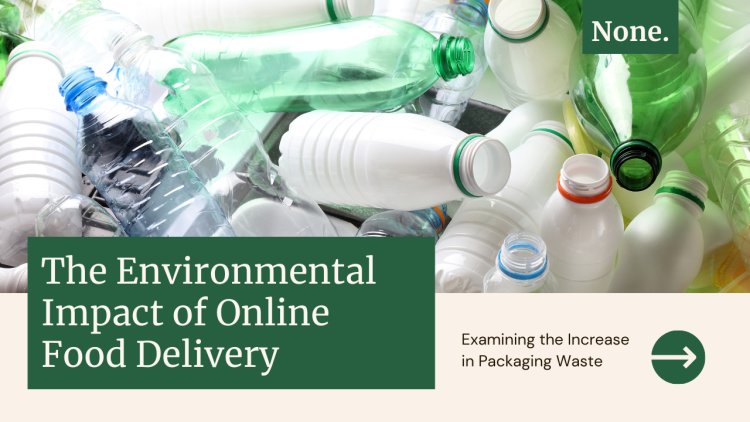The Environmental Impact of Online Food Delivery: Examining the Increase in Packaging Waste
The rise of online food delivery is causing a surge in packaging waste. This blog examines the environmental impact of online food ordering systems like Zomato and Swiggy, including plastic pollution, greenhouse gases, and overflowing landfills. We explore strategies like recyclable packaging, reusable containers, and eliminating waste that could help make online food delivery more sustainable.
Share this Post to earn Money ( Upto ₹100 per 1000 Views )

Introduction
The rise of online food ordering systems like Zomato, Swiggy, and UberEats has transformed the way people access and consume food. With just a few taps on your smartphone, you can use these platforms to order food for delivery right to your doorstep. While incredibly convenient for consumers, the proliferation of online food ordering and delivery is generating staggering amounts of packaging waste. This blog post will examine the environmental impacts of online food ordering systems and delivery and the ways the industry could reduce its packaging footprint.
The Growth of Online Food Ordering
Online food ordering platforms have exploded in popularity over the last decade. In 2020 alone, online food ordering generated over $150 billion in revenue globally. Services like Zomato, Swiggy, and UberEats have become ubiquitous, especially in urban areas. Customers appreciate the convenience, variety, and ease of ordering food with just a couple of clicks on these platforms. For restaurants, online ordering services provide exposure and help them reach new customers.
However, the packaging used for online food deliveries facilitated by these ordering platforms is taking a toll on the environment. From plastic utensils to sauce packets to insulated delivery bags, each order generates a significant amount of waste.
The Environmental Impact
All of the packaging used in online food deliveries ultimately ends up in landfills. The vast majority of this packaging is designed for single-use and then discarded. Here are some of the environmental impacts:
- Greenhouse gas emissions from producing, transporting, and disposing of packaging
- Plastic pollution from utensils, bags, wrappers, and containers ending up in waterways and oceans
- Overflowing landfills as packaging waste accumulates
- Harmful chemicals leaching from plastic packaging materials
- Wasted resources and energy used to create single-use packaging
Clearly, the amount of packaging required for online food deliveries facilitated by ordering platforms generates unnecessary environmental strain.
Strategies to Reduce Waste
Some companies are taking steps to reduce the packaging waste caused by online food ordering and delivery:
- Switching to recyclable or compostable packaging materials
- Providing digital utensils instead of disposable plastic utensils
- Offering reusable containers and bags to customers
- Eliminating unnecessary sauces, napkins, straws, etc. from delivery orders
- Partnering with waste management organizations to improve recycling rates
However, there is much more the industry could do to lessen its environmental impact. Charging customers a small fee for each order that goes towards sustainability initiatives is one option. Making reusable packaging the default could also drive change.
Conclusion
Online food ordering platforms provide unparalleled convenience for customers and restaurants. However, the increase in packaging waste is becoming an environmental problem. From plastic pollution to overflowing landfills, single-use food packaging takes a heavy toll on the planet. As online food ordering continues its explosive growth, companies should prioritize innovative packaging solutions that are reusable, recyclable or compostable. With more mindful practices, online food delivery can become sustainable for both customers and the environment.















